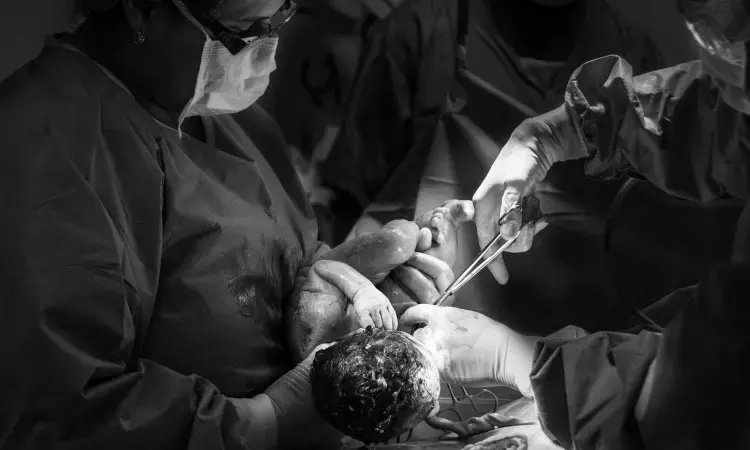- Home
- Medical news & Guidelines
- Anesthesiology
- Cardiology and CTVS
- Critical Care
- Dentistry
- Dermatology
- Diabetes and Endocrinology
- ENT
- Gastroenterology
- Medicine
- Nephrology
- Neurology
- Obstretics-Gynaecology
- Oncology
- Ophthalmology
- Orthopaedics
- Pediatrics-Neonatology
- Psychiatry
- Pulmonology
- Radiology
- Surgery
- Urology
- Laboratory Medicine
- Diet
- Nursing
- Paramedical
- Physiotherapy
- Health news
- Fact Check
- Bone Health Fact Check
- Brain Health Fact Check
- Cancer Related Fact Check
- Child Care Fact Check
- Dental and oral health fact check
- Diabetes and metabolic health fact check
- Diet and Nutrition Fact Check
- Eye and ENT Care Fact Check
- Fitness fact check
- Gut health fact check
- Heart health fact check
- Kidney health fact check
- Medical education fact check
- Men's health fact check
- Respiratory fact check
- Skin and hair care fact check
- Vaccine and Immunization fact check
- Women's health fact check
- AYUSH
- State News
- Andaman and Nicobar Islands
- Andhra Pradesh
- Arunachal Pradesh
- Assam
- Bihar
- Chandigarh
- Chattisgarh
- Dadra and Nagar Haveli
- Daman and Diu
- Delhi
- Goa
- Gujarat
- Haryana
- Himachal Pradesh
- Jammu & Kashmir
- Jharkhand
- Karnataka
- Kerala
- Ladakh
- Lakshadweep
- Madhya Pradesh
- Maharashtra
- Manipur
- Meghalaya
- Mizoram
- Nagaland
- Odisha
- Puducherry
- Punjab
- Rajasthan
- Sikkim
- Tamil Nadu
- Telangana
- Tripura
- Uttar Pradesh
- Uttrakhand
- West Bengal
- Medical Education
- Industry
Researchers find surgical technique reduced risk of early preterm birth for patients with cervical insufficiency

A new study by investigators from Mass General Brigham adds evidence that the most effective way to prevent preterm birth among patients with a history of cervical insufficiency is to place a cervical stitch higher in the abdomen rather than vaginally. This difference in surgical technique was associated with a 70% reduction in risk of preterm birth (birth before 34 weeks) among patients at Brigham and Women’s Hospital (BWH), a founding member of the Mass General Brigham healthcare system, where approximately 6,200 babies are born every year. Results are published in The American Journal of Obstetrics and Gynecology (AJOG).
“Our goal is to ensure a healthy pregnancy and safe delivery for every patient who comes to the hospital. We have data from a previous clinical trial that shows it’s important to choose the right surgical technique to help patients who are at very high risk for recurrent preterm birth. Our study suggests that finding translates to a population of slightly lower-risk women, who are sometimes offered these interventions,” said lead author Chelsea J. Messinger, MD, PhD, of the Department of Anesthesiology at Mass General Brigham.
The study examined an obstetric population at BWH with lower average risk for recurrent early preterm birth than that of an earlier clinical trial, The Multicentre Abdominal vs. Vaginal Randomised Intervention of Cerclage (MAVRIC). Both MAVRIC and the new study compared two surgical methods to prevent preterm births in patients with a history of cervical insufficiency. Cervical insufficiency is a condition in which the cervix opens too early during pregnancy, increasing the risk of a miscarriage or early delivery, and can be treated with a surgical technique in which a stitch is placed to support the cervix.
For the new study, researchers identified two cohorts of singleton pregnancies at BWH between Jan. 1, 2001 and Feb. 28, 2021. The study included 188 patients, of whom 87 received a transabdominal cerclage (TAC), in which a stitch is placed higher in the abdomen, and 101 received a transvaginal cerclage (TVC), in which the stitch is placed vaginally. Eighty-six of the 87 TACs were placed via a minimally invasive approach. After adjusting for sources of bias, researchers found that 5.5% of TAC patients delivered before 34 weeks, compared to 18.7% of TVC patients. Complications from surgery were rare but included uterine perforation and rupture in the TAC group. In the study of BWH patients, Messinger and colleagues found that TAC was associated with a 70% reduced risk of preterm birth compared to TVC. MAVRIC had a similar finding, reporting a 77% reduction in risk.
While the research offers promising information for women with history of cervical insufficiency, researchers emphasize the importance of shared decision-making between patients and their healthcare providers regarding which procedure, if any, may be optimal for individual patients. This includes careful consideration of whether the potential benefits of TAC outweigh the risks of abdominal surgery and Cesarean delivery among patients with fewer risk factors for recurrent preterm birth or miscarriage compared to patients in MAVRIC.
Reference:
Hernández-Diaz, Researchers Find Surgical Technique Reduced Risk of Early Preterm Birth for Patients with Cervical Insufficiency, American Journal of Obstetrics and Gynecology, DOI:10.1016/j.ajog.2025.06.049.
Dr Kamal Kant Kohli-MBBS, DTCD- a chest specialist with more than 30 years of practice and a flair for writing clinical articles, Dr Kamal Kant Kohli joined Medical Dialogues as a Chief Editor of Medical News. Besides writing articles, as an editor, he proofreads and verifies all the medical content published on Medical Dialogues including those coming from journals, studies,medical conferences,guidelines etc. Email: drkohli@medicaldialogues.in. Contact no. 011-43720751


